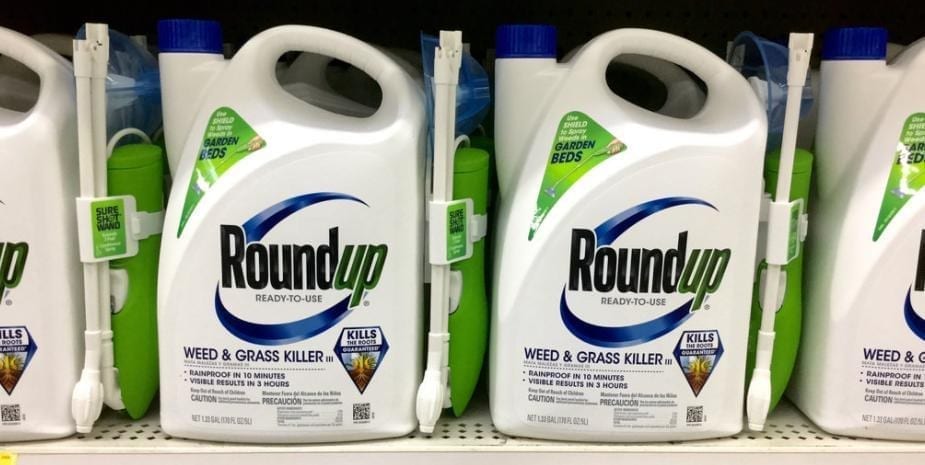Monsanto is unhappy over a recent California ruling that could allow state regulators to add glyphosate, the principal ingredient in the Big Ag giant’s Roundup® weed killer, to the state’s list of carcinogenic chemicals. Judge Kristi Culver Kapetan of the Fresno County Superior Court issued a tentative ruling against Monsanto in the company’s bid to keep glyphosate off that list. The judge said the formal ruling would be forthcoming soon. Once issued, California can not only add the chemical to its list of carcinogens, but it can add warning labels to Monsanto’s products. It would be the first state to do so.
Monsanto is unhappy over a recent California ruling that could allow state regulators to add glyphosate, the principal ingredient in the Big Ag giant’s Roundup weed killer, to the state’s list of carcinogenic chemicals. Judge Kristi Culver Kapetan of the Fresno County Superior Court issued a tentative ruling against Monsanto in the company’s bid to keep glyphosate off that list. The judge said the formal ruling would be forthcoming soon. Once issued, California can not only add the chemical to its list of carcinogens, but it can add warning labels to Monsanto’s products. It would be the first state to do so.
Safety and environmental advocates hailed the tentative ruling as a victory, as did the plaintiff’s lawyers and the many individuals who assert that Roundup exposure is the cause of their cancers. As one such person, John Barton, a farmer in Bakersfield who has non-Hodgkin lymphoma, said, “I don’t want anyone to go through what I have gone through.”
California’s supporters included Arturo S. Rodriguez, the president of United Farm Workers of America, “the nation’s first and most successful farm workers union,” which was founded in 1962 by Cesar Chavez. Also present was lawyer and environmentalist, Robert Kennedy Jr., who made a statement in a press conference following the hearing.

Mr. Kennedy said, “This listing is not going to put them out of business. This is a warning, to let workers know that this chemical can harm them.” He has a point.
There is already a multidistrict litigation (MDL) underway in Federal court in California. MDLs consolidate similar cases for pre-trial issues, such as discovery and expert testimony. Once the pre-trial work is done, the judge presiding over the MDL sends the individual cases back to their court-of-origin to be tried to conclusion. This system ensures uniform pre-trial decisions and saves the parties money, as well as reducing the load on already overburdened court dockets.
In this instance, the MDL is located in the Norther District of California, Judge Vince Chhabria presiding. The cases in the MDL involve agricultural workers, gardeners and farmers, all who claim that Roundup exposure led to them having non-Hodgkin lymphoma (cancer of the lymphatic system).
Monsanto, of course, is not having any of this “protect the people” business. All the Big Ag giant is concerned with is its almighty bottom line; the profits before people paradigm strikes again! It filed the suit it just lost in Superior Court back in January 2016 after California’s state’s Environmental Protection Agency’s Office of Environmental Health Hazard Assessment made known its desire to put glyphosate on the carcinogens list.
One of the company’s arguments is that California is overreaching its authority by seeking the warnings. The logic behind the argument is that the U.S. EPA and the European Food Safety Authority don’t list the chemical as a carcinogen.
According to Monsanto spokesperson Samuel Murphey, “The agency’s flawed and baseless proposal to list glyphosate under Proposition 65 not only contradicts California’s own scientific assessment, but it also violates the California and U.S. constitutions. Monsanto will continue to challenge this unfounded proposed ruling on the basis of science and the law.”
No, glyphosate is not on the carcinogen list of the U.S. EPA. Why would it be? After all, the Agency allowed Monsanto to increase glyphosate levels in certain crops back in 2013. In the only time you will ever see me use the phrase, “Thanks, Obama!”, he signed into law a bill “dubbed the ‘Monsanto Protection Act‘ also in 2013. This law gives corporations like Monsanto (which helped the sponsoring official write the bill) broad protections allowing them to continue selling dangerous products to a largely ignorant and unsuspecting public.”
However, glyphosate is on the list put forth by the International Agency for Research on Cancer (part of the UN World Health Organization). California’s lawyers assert that the IARC is the current “gold standard” used by many states, the U.S. government and many other countries when it comes to identifying carcinogenic chemicals. As a matter of fact, by 2013 twenty-six countries had banned the use of glyphosate based on IARC findings.
One of the lawyers for Monsanto, Trenton Norris, believes that warning labels will cause Monsanto instant financial pain. He argued that customers would stop buying Roundup after seeing the warning labels. He said, “It will absolutely be used in ways that will harm Monsanto.”
You know what else could harm Monsanto? Paying out judgments to the hundreds, if not thousands, of people whose cancer may have been caused by Roundup, that’s what.
Then again, with the way the new administration is slashing safety regulations in favor of corporations, California – and all the injured plaintiffs – could end up eating crow… with a side of glyphosate.


Join the conversation!